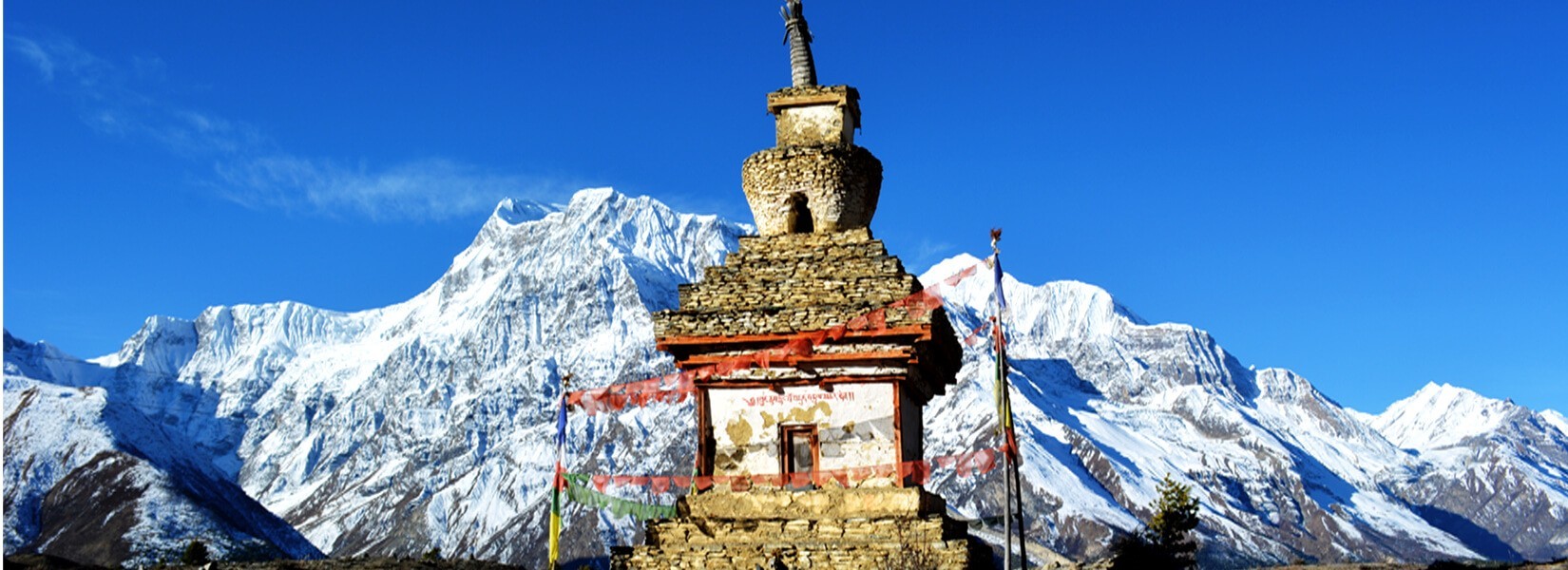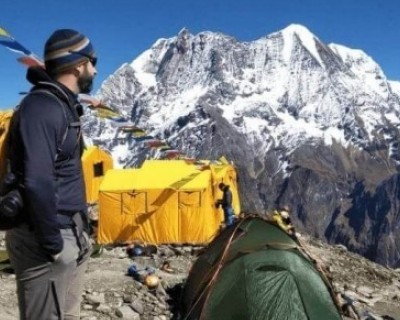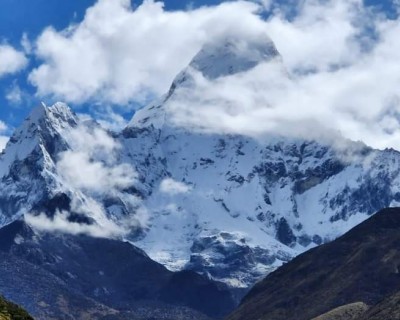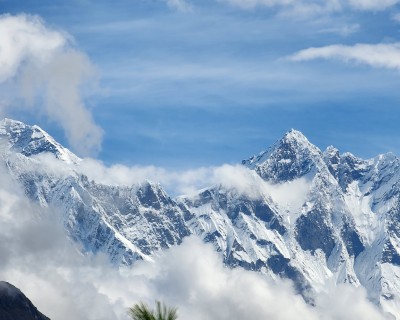What are the basic Trekking tips for beginners?
This question might cross your mind once in a while when you are trekking for the first time. Trekking preparation tips are needed even if you’ve had an experience before. To make your trip to the Himalayan country Nepal easy and comfortable, I have come with the answer to all your question. Continue reading the article to know the trekking preparation tips:
You should know that trekking in the mountains is not as easy as walking in the city or exploring the park. There are many things that you have to be prepared for before going on a trek. You should be capable of analyzing whether your strength will allow you to go for a complete trek or not.
You don't need to be like Sir Edmund Hillary or Pasang Lamu Sherpa to experience the Himalayan Mountains. Whatever your age, experience, or ability be, everyone can do mountain trekking with proper training and guidance. However, the Himalayan countries like Nepal have unique cultures and beliefs, different languages, flora and fauna, food and customs, and many more.
You should be prepared for a maximum of the things (if not all) before and while trekking to grab the best from the visit.

Before you trek the mountains
Trekking in the mountains in Nepal without any preparation can lead you to disaster. So please read the tips below before trekking in the Himalayas.
1. A short hike in the Hills
Trekking in the mountains demands many days of walking which ranges from 4-8 hours per day depending upon the trekking routes and the distance. The key is to increase your walking strength and stamina.
Walk for 3-6 months before trekking in the Himalayan adventure. Practice walking with a day pack, starting with the 2-3 hours hike in the nearby hills. Build your fitness. You can also increase the time and distance by hiking multiple-day trips.
Also, you can increase your strength by doing other sports activities like running, football, yoga. Visit gyms to build stamina, endurance, and fitness for trekking in the Himalayas.
2. Carry a strong and comfortable pair of trekking boots
As you start walking in the Himalayas, you may not want to have so many breaks because of your boots.
Your walk is all about your boots as nothing is more debilitating than a blister on your foot. Before you go for the trek, choose a strong and comfortable pair of boots, that fit you properly, are durable and comfortable at the same time. Because during these days you will spend a lot of time in those pair of shoes rather than anything else.
While buying shoes for trekking, it's a good idea to bring a pair of warm hiking socks with it. Wear the shoes beforehand going on the trek. Don’t wear it for the first time during the trek because that may rip off your skin and you may get painful blisters. But if you wear the shoes multiple times before the trek then it will be easy and comfortable for you as you’ll adapt to it.
3. Pack everything you need
Planning trips to the Himalayas for a week or more gets everyone confused about what to pack and what not to. It's common to have this question before going on any tour or trip. You may see everything you need in different aspects and pack as you like. For example, packing 10 t-shirts and your hairdryer that you can't just leave behind will add more burden to your package. Think twice before packaging your backpack. The essential elements to trekking in the Himalayas are to pack lightly and keep the item very minimum. Keep only the stuff without which trek might become difficult.
You may be thinking of using the services of the mountain porter to carry your luggage but the reality is you probably won't need it.
If you are still confused about what to pack and what not to. Then here is the list of some certain items that you shouldn't miss while trekking in the Himalayas. Please check the list below and pack accordingly.
Traveling bags:
- Day Packs
- Duffer Bags
- And Puck bags with waterproof covers
Head:
- Sunglasses
- Woolen hat
- Sun Hat
- Scarf
- Headlight
Upper body:
- Light T-shirt
- Waterproof jackets
- Thermal Vest
- Lightweight thermal tops
- Fleece Jackets
- Pullover
- Women sports bra, synthetic
Lower body:
- Fleece pants
- Waterproof shell pants
- Lightweight walking pants
- Hiking short
- Undergarments
Handwear:
- Lightweight fleece gloves
- Heavyweight gloves
- Water and windproof gloves
Footwear:
- Hiking boots
- Camp sandals
- Pair of walking poles
- Thick warm wool hiking socks
- The inner socks.
Other accessories:
- Sunscreen
- First Kids
- Sleeping bags
- Pillowcase and other night accessories
- Water purifiers
- Hand sanitizers
- Towel
- Wet wipes
- toiletries
- Way of greeting:
One of the great aspects of trekking in the Himalayan region is experiencing a unique mountain culture. Before trekking to the mountains, you need to read about the place you are going to explore and the culture and norms of the region you will visit. Many Himalayan communities are very conservative and very friendly too but also they would not want to unintentionally offend.
So you should be quite prepared before trekking here. For example, while walking a prayer wheel always try to walk clockwise. Learning key phrases like the simple greeting word "Namaste" in Nepal will help your day pass with ease.
Tips while trekking in the Himalayas
You head to the mountains and are on the trail. These tips for trekking in the Himalayas will help you stay safe and complete the trek with no or minimum casualties.
1. Hydrate your body
While trekking at a high altitude, it's very essential to keep your body hydrated. Trekking at a high altitude your body gets dehydrated. So it's very essential to drink a lot of water.
We recommend you drink a minimum of 2-3 liters per day. It not only helps to increase your energy level but also helps to reduce the chances of altitude sickness.
Carrying your water bottle and water purification tablets will help to make undrinkable water safe.
2. Protect your skin
With the crisps mountains of fresh air, it is all too easy to forget about your skin protection. But remember that at the high altitude, the sun's rays can be more powerful compared to a day you spend on the beach. Remember to use a scarf or hat during the day and sunglasses and sunscreen to protect your skin.
3. Try to dress in layers
The weather in the mountains is unpredictable and can change at any time. While trekking, people often bring the windproof outer-shells but they completely forget the layering system.
At the high altitude, the weather is very fickle and you will have to work hard as there are lots of obstacles and challenges. The key point is to dress in light, moisture-wicking layers so that you can easily put on and take off your clothes as per the weather of the day. So be careful while dressing at a high altitude.
4. Don't miss out on anything
It's always better to explore the places when you have the time. It is not like you will also have the time and the budget to trek the same place multiple times so it's always better to visit the place once without missing anything around.
Trekking in the mountains is a great privilege. One can be lost in the beauty of the mountains and nature. The diverse array of flora and fauna, the stunning mountain scenery, and breathtaking nature. You can also follow the famous saying "take nothing but pictures, leave nothing but footprints".
5. Altitude sickness
While trekking in the mountains, never forget or neglect altitude sickness. The Himalayas is the home of the world's iconic snow-capped Mountains-Mt Everest (the world's highest mountains standing 8848.8 meters above sea level). While trekking in the Himalayan region you probably will be in the high altitude for long periods.
Altitude sickness can affect anyone, no matter their age, fitness level, and ability. Many times we can see the fit people suffer from altitude sickness compared to lesser fit ones. But following some measures and precautions, knowing about the symptoms of the sickness, its risks, remedies to cure it, and many more can help you a lot.
Trekking in the high altitude region, you can expect this sickness to stick but always stay aware.
The symptoms of altitude sickness can vary but some commonly seen symptoms are:
• Vomiting
• Dizziness
• Loss of appetite
• Nausea
• Loss of breath
• Difficult in sleeping
The most important rule to flow while trekking to the high altitude is to walk slowly. Don't try to rush. Pay close attention to how you are feeling. If you discover some symptoms then quickly inform your guide or trekking partner so they can give you a First-Aid, or take you to the medical nearby if it's an emergency.
6. Be friendly
As mentioned above, do some research about the culture of the Locals of the Himalayan region before you hike. If you are impersonal, then don't try the local foods or respect the beliefs, if you do it then you will find fewer people and less good experience. Be yourself and enjoy yourself to the fullest.
It is also more important to follow the give and take principle with the locals. The local people are very warm and friendly, but you also should be warm and friendly with them in return.
7. Stop and smell nature
The most important tip while trekking in the mountains is to take your time to explore the surroundings and not rush. The Mountain region is the place to stop, explore, view, enjoy and smell nature and live in the moment.
Most Frequently asked questions for trekking in mountains?
You may have lots of questions crossing your mind about Trekking in Nepal. Maybe you are confusing when to trek, which trek to do? And many more so here we have tried answering some common and frequently asked questions about trekking in mountains.
Hope this can help you a lot when planning the trip to the Himalayan regions of Nepal.
What is trekking in the Himalayas like?
Nepal is a country with massive mountains and hills covering the area. Trekking in Nepal leads you to the foot of the mountains. Walking through the dense forest in the hilly region to the world's highest snow-capped mountains means traversing the trail that meanders up and down the mountains. So when planning a trekking destination in Nepal you need enough walk experience.
Is trekking hiking/climbing?
Well, there is a difference between trekking, climbing, and hiking. Hiking is a short walking adventure with a continuous walk and finishes on the same day without a night stay. While trekking is multiple days walking with overnight stays.
And climbing is a technical activity that requires the good skills of climbing the snowy mountains.
How difficult is it to trek in Nepal?
It is the most asked question about Nepal. Let me answer you this, even the easiest trekking may feel difficult for some people. But, trekking here is categorized as easy to strenuous depending upon the duration, altitude, and terrain. You can ask your trekking agency about the difficulty of the trek you are planning to do.
When is the best time to trek in Nepal?
When planning trekking in Nepal, people always get confused while picking the right time to trek. If you are not planning to trek at higher altitudes, you can trek anytime throughout the year. But you should peak the season while trekking at the high altitude. The best time to trek in Nepal is during the spring and autumn season. The Spring season is clear and good weather can be witnessed throughout the day with a pretty warm temperature. The autumn season is also the best time as the days are very nice and cool to trek. The spring season comes right after the winter season and the autumn season comes right after the monsoon season.
The summer season gets heavy rainfalls, the route at the high altitude gets slippery and trekkers may have to face many obstacles. In the winter season, days and nights are very cold and foggy. And therefore these two-season may not be suitable to travel in certain areas. However, you can discuss with your trekking agency to choose the best time for your trek.
How important is fitness while trekking in the mountains?
Fitness is a very important aspect of trekking in the mountains. You must be physically and mentally healthy to trek for the days in the mountains. Work out and go for short hikes before the trek. This can be very helpful while walking in the altitude reducing the chances of altitude sickness. Working to increase strength is a very important thing. If you are in good condition, you can enjoy every walk at the altitude. A low level of physical health can put you in many difficulties, increase the risks of altitude sickness, and so on. So you need to have the good physical fitness to trek in the mountains.
How many hours should I have to walk daily?
The walking hours depend upon the trekking route you choose. If you are planning to trek one of these treks including Everest Base Camp, Annapurna Base Camp, Annapurna Circuit Trek, Manaslu Trekking you have to walk 5-6 hours per day on average. But the duration depends upon the terrace and the altitude of the trek. During the trekking days, you will have enough time to rest, acclimatize and explore the area you are in.
Is trekking for all age groups of travelers?
With old aged and children may get confused about where you can trek with them. Trekking in Nepal is suitable for all age groups. Trekking here can be fun for both children as well as senior citizens. You have to choose the trek based on the difficulty level. For children and old people, you need to be extra careful in the high altitude region. But you can solve this problem by customizing enough rest and acclimatization days.
To trek with children and old people, you have the option of Ghorepani Poon Hill Trek, it is one of the popular, short, and easy treks in Nepal suitable for all age group.
How much budget should I carry for trekking in Nepal?
In general, the amount estimated per person on average is around $25 for trekking in Nepal. The food and accommodation cost may be around $2-$3 per person which also includes the food cost provide in the tea house in the altitude region.
But this cost doesn't cover the hot water shower and recharging gadget, it might cost you a couple of extra bucks. If you are a budget traveler, then you must carry around $15. To enjoy the fullest in the trek, carrying around $25 would be enough.
Any ATM services on the way to the trekking routes?
Well, trekking in the high altitude region, it is very hard to find ATM services and other modern facilities. The last ATM you can see is in Lukla and Namche Bazaar if you are trekking the Everest Base Camp Region. So it's better to use the ATM in Kathmandu and Pokhara and carry the necessary cash you need during the trek.
How much tip should we give to the guide and porter?
The unwritten but popularly followed rules are to tip to the guide and porter you hire. It is good if you tip 15 percent of the total cost you spent on trekking. If you are trekking solo, then tip the guide $5 per day and around $2 to $3per day to the porter.
For the group trekkers, you can tip $10 per day to the guide and $5 per day for the porter. You can also tip as you wish based on the services provided.
Hope you found the tips for trekking in mountains useful. If you want to know more about trekking in the mountains, then you can contact us: [email protected]

.jpg)






